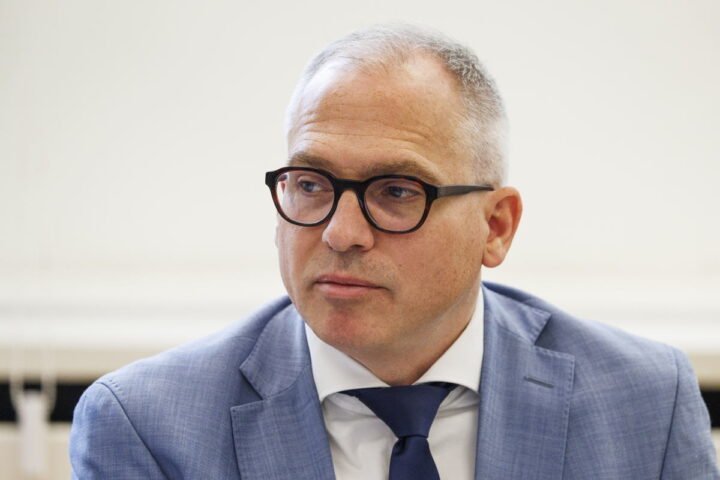Belgium Enhances Defence Policy with Major Investments
Belgium is entering a new phase in its defence policy, with major investment plans, international cooperation and strategic realignment both at the federal and regional levels. The Council of Ministers is set to decide Friday on the updated strategic vision for defence, including the purchase of eleven additional F-35 fighter jets., reports 24brussels.
Defence Minister Theo Francken (N-VA) confirmed on Wednesday that the final decision will be made at the ministerial level. “The Council of Ministers has to tranche that on Friday,” he stated. The procurement is expected to cost between 1 and 1.5 billion EUR, following an agreement reached by the core cabinet last week on a broader strategic vision that extends to 2034, ahead of the NATO summit in The Hague.
Major Defence Budget Increase
The defence budget is projected to rise significantly from 10.8 billion to 18.2 billion EUR, reaching a total of 139 billion EUR in the coming years. “Everything we did during the Cold War will return, and even more,” commented General Harold Van Pee. By 2035, Belgium’s armed forces are expected to expand to 34,500 soldiers, 8,500 civilians, and 12,800 reservists. A total of 50 billion EUR is designated for personnel, which Francken indicated would sufficiently address both the increase and military personnel’s social status. “Discussions have been going on with the unions about this for a long time, but there is no agreement yet,” he acknowledged.
Significant funding will also focus on air defence, which includes Pioruns, Nasams, and possibly 20 Skyrangers (mobile short-range systems produced in Germany). Francken noted that Belgium’s limited military cooperation with Germany might change, “because it is becoming a leading force.”
Additionally, Francken confirmed plans for a long-awaited new medical facility. After visiting the site in Neder-Over-Heembeek, he described the current situation as “actually a disgrace” requiring urgent renewal.
Regarding long-term NATO commitments, Francken stated that Belgium will maintain its defence expenditure at 2 percent of GDP through 2033, increasing to 2.5 percent in 2034. The new NATO standard is set at 5 percent of GDP by 2035, with 3.5 percent dedicated specifically to military spending.
“You can establish a political vision for the long term, but policy is always partly responding to current events,” Francken added. “I predict: a lot is going to happen in the coming years.”
Flanders’ Role in NATO’s 1.5 Percent Spending Target
Simultaneously, Flanders is assessing its potential contributions to NATO’s non-military defence spending target. During last month’s NATO summit, allies agreed to a 5 percent GDP defence benchmark, divided into 3.5 percent for strictly military expenditure and 1.5 percent for defence and security-related domains.
In the Flemish Parliament on Wednesday, Prime Minister Matthias Diependaele (N-VA) clarified that while Flanders cannot contribute to the 3.5 percent portion due to defence being a federal matter, it can assist in meeting the 1.5 percent target. “Even if we were to make military purchases from Flanders, this cannot be included in the 3.5 percent norm because defence remains a strictly federal matter,” he explained.
Diependaele identified areas such as “investments in industrial defence capacity, innovation, civil preparedness, resilience against hybrid attacks, stockpiling, maintenance/expansion/strengthening of our physical and digital infrastructure and financial support for defence and security programmes” as potential contributions.
He added that Flanders would engage politically with the federal level and other federal states. “Once we have insight into that, we can use a cooperation agreement to see how we can contribute further.”
Belgium Hands Over NATO Command to Latvia
Meanwhile, Belgium has concluded its six-month command of NATO’s Standing Mine Countermeasures Group 1 (SNMCMG1) during a handover ceremony in Zeebrugge on Wednesday. The command was transferred from Belgian frigate captain Erik Kockx to Latvia’s Janis Auce.
Under Kockx’s leadership, SNMCMG1 conducted various maritime security tasks, including Operation Baltic Sentry, initiated in response to infrastructure damage to submarine cables between Estonia and Finland. The group also identified and neutralised historical explosives to ensure safer shipping lanes.
“Under the leadership of Commander Senior Grade Erik Kockx, the group has demonstrated its effectiveness in complex and multidimensional environments, with participation in BALTOPS 25, a large-scale multinational exercise that involved over 40 ships, 25 aircraft, and more than 9,000 military personnel from 16 NATO allies and partner countries,” stated the Defence Ministry.










